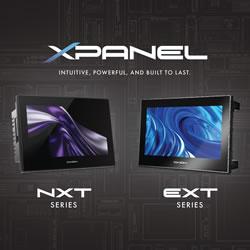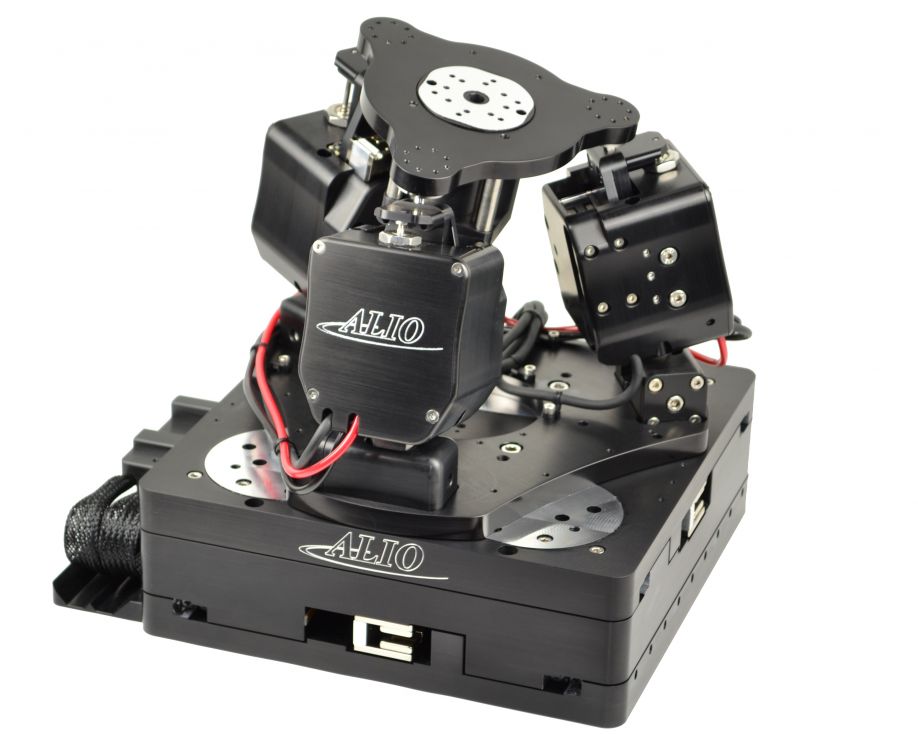The concept of “precision” is analysed, and it is suggested that when looking at motion control solutions that provide sub-micron and nanometer-level accuracy, a new language is necessary, and new standards are required to indicate the real levels of precision...
What Is the Point in Precision?
Bill Hennessey | ALIO Industries, Inc.
The language used by suppliers of technology solutions aimed at precision engineering applications is vague and in some instances confusing. ALIO Industries exists as the provider of the most accurate and repeatable motion control solutions available in the market today, and finds itself constrained by the use of traditional language and words such as “precision” and “resolution”, which without any degree of qualification are just meaningless. In this article, the concept of “precision” is analysed, and it is suggested that when looking at motion control solutions that provide sub-micron and nanometer-level accuracy, a new language is necessary, and new standards are required to indicate the real levels of precision that different motion control solutions can achieve.
There are times when technological advancements are such that they necessitate a root and branch change in the language and nature of discussion associated with them.
When electricity became available in every home, it would have been somewhat perverse if we had all continued to talk in terms of our preferred candles rather than the relative luminescence and longevity of various forms of light bulb. Likewise, when the car began to emerge, and eventually replaced the horse and cart as the most efficient form of transportation, the discussion logically switched from the best hay to feed the horse to the merits of different forms of internal combustion.
Without stretching this analogy to breaking point, there is a similar shift in the area of motion control. A new technology has emerged that pushes the boundaries of what is deemed possible in terms of precision to such an extent that the language surrounding the technology has to change, and the nature of the conversation needs to shift in order to differentiate this new technology from standard industry alternatives.
6-D ALIO Hybrid Hexapod.
The technology in question is the Hybrid Hexapod® from ALIO Industries, Arvada, CO, USA. We are in blue ocean territory here. In the last 20-25 years, there has been more and more interest in hexapods to cater for the increased demand for micron, and sub-micron level precision in multi-axis motion applications. Hexapod motion control technology exists at the ultra-precision end of motion control, and it has been the best-in-class motion control solution for exacting industrial applications for a couple of decades.
The burgeoning area of more and more precise motion control is driven by industry demand for technologies that will improve production processes. The emphasis from across industry is for smarter, smaller, and faster precision motion control and positioning equipment, and demand is especially high in areas like laser micro machining, micro assembly automation, optical inspection, semiconductor metrology, and photonics components test and alignment applications.
The Hybrid Hexapod® represents a quantum step forward in motion control, and for the first time provides the ability to achieve repeatable nano-level accuracy, stimulating innovation and promoting manufacturing efficiency previously considered impossible. It is redefining the area of precision motion control, and the rule book is having to be rewritten to accommodate it and to position it correctly against industry alternatives.
One key area for focus is how motion control process suppliers describe the level of precision achievable. Standard industry vernacular talks in terms of micron and sub-micron precision, but ALIO is now working with NIST to move to a new and more effective methodology of measuring and quantifying motion systems by introducing the concept of Point PrecisionTM.

Single point precision. Point Precision® Metrology
What Does Precision Mean? Really Mean?
The very nature of the word precision is vague. Readers will be used to hearing descriptions using phrases such as “precise” and “ultra-precise”. Also, you will be used to reading claims of achievable “resolution”. But what does resolution really mean and what does it tell you?
In the area of motion control the focus should and must be on much more exacting criteria, by which we mean repeatability and accuracy. Precision is actually synonymous with repeatability and accuracy, but too often suppliers hide deficiencies in these areas behind meaningless phrases such as precision, high accuracy, high precision, or ultra-precision
When looking at the Hybrid Hexapod®, “precision” means 10 nanometers or less — repeatably!
For standard Hexapods claims of precision are best condition, unidirectional one axis numbers, which don’t factor all six-axis error quotients or the backlash, which is the total error of all motion in a Hexapod due to the compression and tension of each leg for every move. Claims made for conventional hexapods may be designed to look like a similar duck to claims made by real nanometer accurate motion control solutions, but from the perspective of Point PrecisionTM they do not quack in nanometers but tens of microns.
Unless the word precision is accompanied by such quantifiable and definite statements in terms of what is achievable, it is truly meaningless. While still vague, micron, sub-micron, and nano precision is better. It at east gives an illusion to the level of precision that is being claimed.
Point Precision® — The New Gold Standard
The language used can be seen to be deficient, it is not being refined enough and evolving quickly enough to help differentiate available motion control solutions. So saying, ALIO Industries has introduced the concept of Point Precision® which has now been adopted by NIST as the future standard methodology of measuring and quantifying motion systems.
Point Precision® includes all 6 degrees of freedom of errors of each axis in motion, guaranteeing the precision point in the full work envelop. (As an example, the ALIO patented Hybrid Hexapod® has a 3D point precision of less than 100 nm repeatability anywhere in its full work zone. With that information a customer with, for example, a demanding metrology application can be extremely confident in their uncertainty measurement error quotient.)

6-D Point Precision® incorporates all sources of error at any desired work location into a meaningful 3-dinesional value.
Point Precision® allows for a “precision number” to be quoted based on an exact point on the wall (as if you used a laser pointer) whereas today’s standard only gives the measurement to the wall as if using a flood light. As a signifier of accuracy and precision today, Point Precision® truly is a must for many applications from laser processing to metrology.
We exist in a world where alternative suppliers are unable to match the precision of ALIO’s motion control solutions. The key is not just an ability to be nano precise, but to be nano precise repeatably. For some suppliers this is impossible, and so we see either false claims or illusory claims often hidden behind the veneer of meaningless phrases such as ultra-precise and high resolution.
Some even go as far as to publish “Typical Specifications” and “Guaranteed Specifications”. Typical specifications show what “could” be possible in a motion control solution, and allude to much greater precision than the guaranteed specifications, which is what the supplier will — obviously — “guarantee”. In other words, they show what they would like to be able to do repeatably, and then show that what they can actually do which is less good. They aspire to be better than they are. It may indeed be fair to say that they aspire to be as precise as ALIO.
Unclear claims and false claims help no-one, especially the customer who often ends up with sub-optimal results.
This is why ALIO has moved the conversation along, and in terms of specifications we have changed the language and now routinely talk about Point Precision®, referencing performance specifications to a point in space, not the planar methodology current standards use. This is the basis of the new NIST standard for measuring motion systems mentioned above.
While there are compensation methods to reduce error sources in conventional 6-link hexapods, they do not improve performance at the single-digit micron or nanometer level. Motion systems’ straightness and repeatability performance must be analyzed and specified using a “point precision” methodology that accounts for ALL 6-D spatial errors in order to provide a true representation of nanometer precision, or what ALIO call “True Nano” ® precision.
Point Precision® is the gold standard when customers need to assess the REAL precision of alternative motion control solutions, and reinforces ALIO’s claim to be the ONLY motion control supplier that can provide repeatable nano levels of precision in motion control.
Summary
There are numerous companies working in the area of micro and nano manufacturing that exist because of a passion to lead and to provide industry with solutions that stimulate innovation and advance the chances of achieving success in ever more exacting precision engineering applications. By their very nature, they push the boundaries, and strive to provide technology solutions that facilitate greater and greater precision, which is consistently demanded across industry.
However, at the same time, there are numerous companies that follow, and attempt to compete with sub-optimal solutions, either making false claims of competence, or using language that is vague, and does not shine a light in a meaningful way on the levels of precision that can be achieved. It is the customer base that suffers from such lack of clarity and obfuscation.
ALIO has adopted a new approach to address the lack of clarity that exists specifically in the area of motion control solutions. The company is independently acknowledged as the only supplier that can manufacture repeatable nano-level accurate motion control solutions, and through a process of education and redefining the language used to explain its technologies, ALIO will give industry the tools and understanding to differentiate between the alternative levels of accuracy and repeatability that exist in the market today.
The creation with NIST of the Point Precision® as the future standard methodology of measuring and quantifying motion systems, ALIO is exemplifying the uniqueness of its motion control solutions in the area of nanometer precision, and as would be expected of a company at the bleeding edge of innovation in 6-D Nano Precision® motion control, is leading and changing the conversation.
About Bill Hennessey
C. William (Bill) Hennessey founded ALIO Industries in 2001 with the goal of designing the world’s most precise, highest quality 6 Axis robot built in the USA. ALIO means a ‘better way’ in Latin, indicating that the company has always thought outside the box when developing its motion control solutions. Bill has been a serial entrepreneur, mechanical engineer, robotics sales leader and marketing professional in the robotics, lasers and automation fields with over 40 years of experience at large international corporations and small start-ups. Bill has a BS in Mechanical Engineering Technology and a minor in Business Administration from the University of Maine.
About ALIO Industries
ALIO is an expert innovator producing best-in-class “made in America” motion control technologies, and has achieved undisputed market-leadership and pre-eminence through a reputation built on honesty, integrity, reliability, and trust, coupled with an obsessive focus and passion to deliver ground-breaking and exceptionally high-quality motion control solutions for our customers. The company works with customers that require the best, and command an unparalleled level of expertise and a breadth of experience born out of 18 years at the vanguard of innovation in areas of engineering where razor-sharp attention to quality and reliability are vital.
The content & opinions in this article are the author’s and do not necessarily represent the views of ManufacturingTomorrow
Comments (0)
This post does not have any comments. Be the first to leave a comment below.
Featured Product


